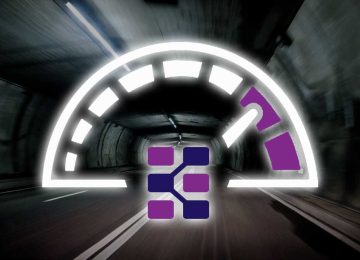As a small business owner, you’re probably so focused on the immediate needs of your customers and business that you don’t have much time to think about long term goals like planning for retirement. Without an employer to provide a 401(k) plan for you, it’s important that you choose the best option for retirement savings.
The First Place to Start is with an IRA Account
If your tax liability is low, consider a Roth IRA. You won’t be able to deduct your IRA contribution on your tax return. But you’ll never pay taxes on withdrawals of your Roth IRA contributions. And you won’t pay taxes on withdrawals of your earnings as long as you take them after you’ve reached age 59½ and you’ve met a 5-year holding period requirement. A Traditional IRA is pre-tax meaning you may be able to deduct some or all of your traditional IRA contribution from your taxes. The deductible amount could be reduced or eliminated if you or your spouse is already covered by a retirement plan at work. You’ll pay ordinary income tax on withdrawals of all traditional IRA earnings and on any contributions you originally deducted on your taxes. 2016 contribution limits for both Traditional and Roth IRAs are as follows: $5,500 if you’re under age 50 and $6,500 if you’re age 50 or older.
Note: You can never contribute more than you’ve earned for the year.
Although contributing to an IRA is a good idea, small business owners have several other options that can significantly increase the amount that can be saved for retirement in a tax-effective way.
There are some other small business retirement plans that offer a simple way for business owners—either sole proprietors or employers with a few employees—to increase retirement savings opportunities and enjoy certain tax advantages without the paperwork, cost, and administration required by a regular 401(k).
Incorporation isn’t the key factor here, but specifics such as whether you have employees and, if so, how many, can make one plan better suited to your situation than another.
SEP-IRA: The easiest to set up and maintain, it is particularly suited to sole proprietors.
A SEP-IRA (or a Simplified Employee Pension) can be a great choice for saving a lot and keeping paperwork to a minimum whether or not you have employees. It’s easy to open and lets you make fairly high annual contributions. It also gives you the flexibility to vary contributions—or skip them entirely—according to your yearly business needs.
A SEP-IRA can be ideal for a sole proprietor. Annual contributions can be as high as 20% of net self-employment income for an owner, up to $53,000 in 2016. However, there are a few caveats if you have employees.
First, all contributions are made by the employer, not the employee. And, as an employer, you’re required to contribute the same percentage of an employee’s compensation as you contribute for yourself. You must cover employees over the age of 21 who have worked for for you during any three of the past five years and have earned at least the required minimum compensation for the current year ($550). That could end up being a hefty sum if you have more than a few employees.
Individual 401(k): Offers higher contribution limits if you have no employees except your spouse.
An Individual 401(k) or an Individual Roth 401(k) can be a great choice for contributing a lot, but it’s only available if you work for yourself and your only employee is your spouse.
It requires more paperwork than a SEP, but allows even higher contributions—20% of net self-employment income for the business owner, plus an additional $18,000 in salary deferrals for 2016, with a maximum of $53,000 for this year. If you’re 50 or older, you can contribute an additional $6,000, bringing the maximum to $59,000.
If your spouse is also an employee, he or she can also contribute up to $18,000 in salary deferrals (plus a catch-up contribution of $6,000 if age 50-plus). And you, as the employer, can match that contribution up to 25% of salary. That all adds up to quite a significant sum! Another possible plus is that you can borrow against your savings.
SIMPLE-IRA: A good choice if you have fewer than 100 employees and want them to contribute to their own retirement.
A SIMPLE-IRA (or Savings Incentive Match for Employees) is available to companies with 100 or fewer employees. With this plan, employees make their own retirement contributions—up to $12,500 for 2016, with a catch-up contribution of $3,000 for those age 50-plus. As the employer, you’re only required to make a small matching contribution (1 to 3% of employee compensation).
While your obligation as an employer is less, the contributions you can make for yourself are also significantly lower than for a SEP-IRA or Individual 401(k). That’s because the business owner is subject to the same contribution limits as employees.
What about Defined Benefit Plans?
Finally, older small business owners who need to catch up on their retirement savings may want to consider another option—setting up their own defined benefit (DB) pension plan (also known as a Personal Defined Benefit Plan ). If your business is generating high levels of income, this type of plan could allow you to exceed the regular contribution limits. With a DB plan, those limits are based on actuarial factors as well as business income. Although there’s a bit more complexity involved, your tax advisor or financial consultant should be able to provide the actuarial services and assistance with required IRS forms for a Personal Defined Benefit Plan.
The Bottom Line: A regular IRA is still a smart personal choice.
The good news is that you can contribute to both a small business retirement plan and a regular IRA and potentially get a tax deduction for each, depending on your income. So I encourage you to contribute the maximum to an IRA each year. For 2016, that’s $5,500 with a $1,000 catch-up contribution if you’re 50 or older.
Talk to your tax advisor.
As you can see, there are a number of options for small businesses, depending on how many employees there are and the type of opportunity a business owner wants to provide for employees.
I hope this enhanced your understanding of small business retirement plans. I welcome your feedback, please feel free to contact me if you have further questions or comments.
 Looking for Technical Consulting?
Looking for Technical Consulting? 







